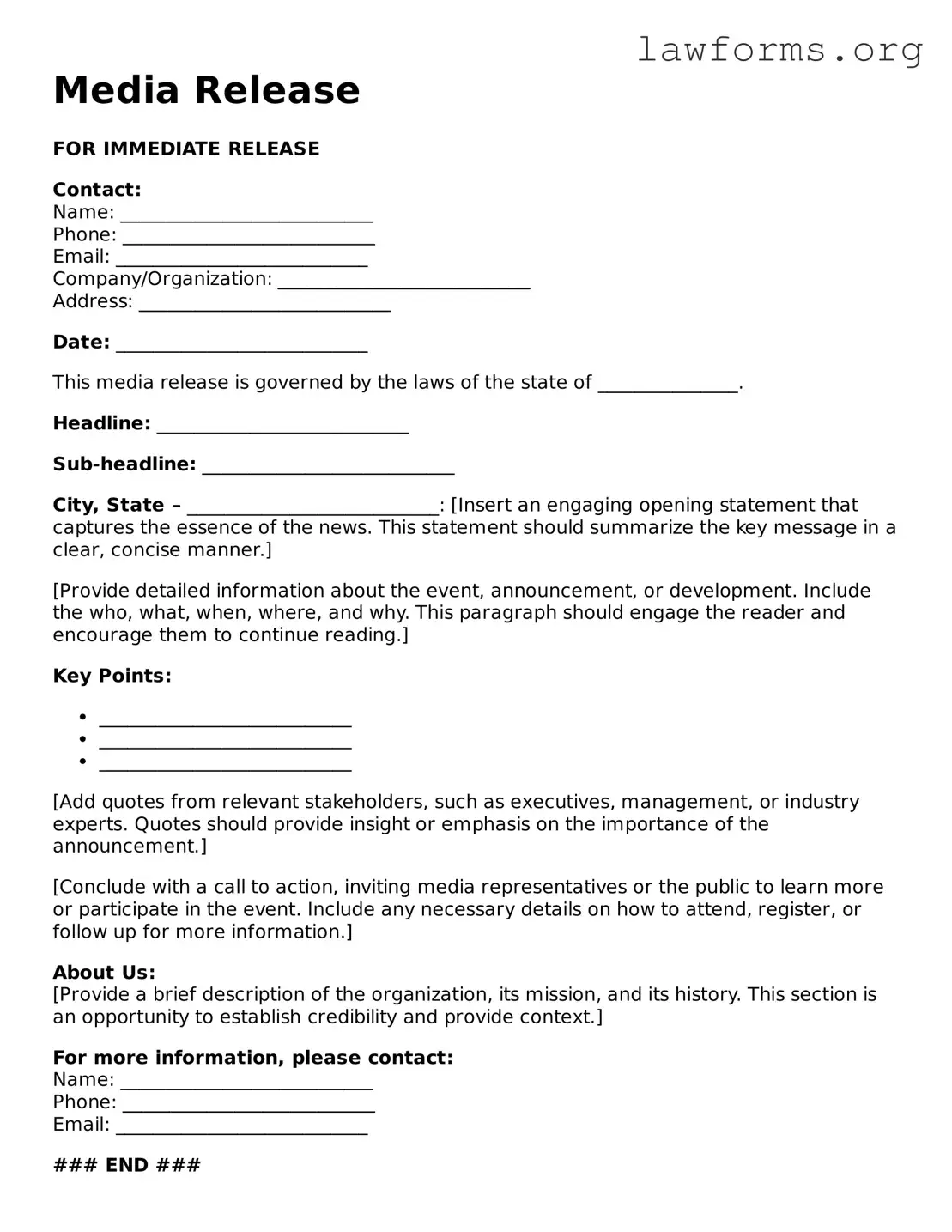Media Release
FOR IMMEDIATE RELEASE
Contact:
Name: ___________________________
Phone: ___________________________
Email: ___________________________
Company/Organization: ___________________________
Address: ___________________________
Date: ___________________________
This media release is governed by the laws of the state of _______________.
Headline: ___________________________
Sub-headline: ___________________________
City, State – ___________________________: [Insert an engaging opening statement that captures the essence of the news. This statement should summarize the key message in a clear, concise manner.]
[Provide detailed information about the event, announcement, or development. Include the who, what, when, where, and why. This paragraph should engage the reader and encourage them to continue reading.]
Key Points:
- ___________________________
- ___________________________
- ___________________________
[Add quotes from relevant stakeholders, such as executives, management, or industry experts. Quotes should provide insight or emphasis on the importance of the announcement.]
[Conclude with a call to action, inviting media representatives or the public to learn more or participate in the event. Include any necessary details on how to attend, register, or follow up for more information.]
About Us:
[Provide a brief description of the organization, its mission, and its history. This section is an opportunity to establish credibility and provide context.]
For more information, please contact:
Name: ___________________________
Phone: ___________________________
Email: ___________________________
### END ###
